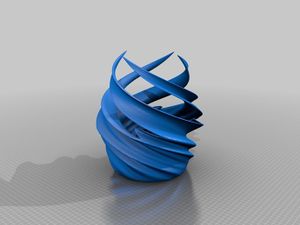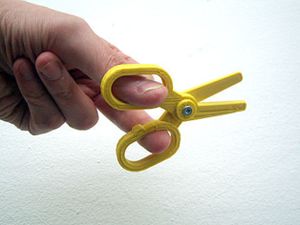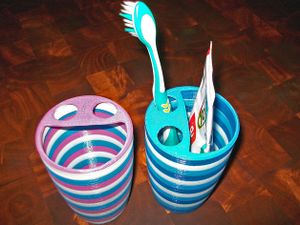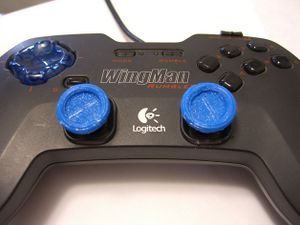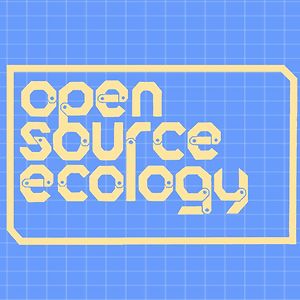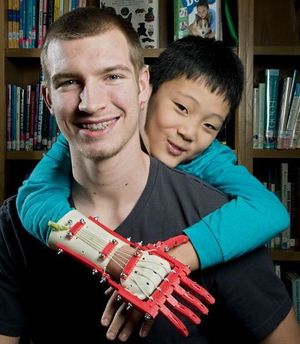User:EvaVivu/Blog
Main | About Me | Class Blog
For this class we write weekly blogs on a variety of topics that have to do with 3D printing.
Contents
- 1 Blog 1: Thingiverse
- 2 Blog 2: Open Source Ecology
- 3 Blog 3: Article discussion
- 4 Blog 4: Opinions about Open Source Ecology from students
- 5 Blog 5: RepRap Timeline
- 6 Blog 6: Project ideas
- 7 Blog 7: Article discussion
- 8 Blog 8: Intellectual property and 3D printing
- 9 Blog 9: Filament buying
- 10 Blog 10: Hot tips buying
- 11 Blog 11: Show and tell discussion
- 12 Blog 12: discussion of blog 5
- 13 Blog 13: discussion of blog 7
- 14 Blog 14: discussion of blog 8
- 15 Blog 15: discussion of blog 11
Blog 1: Thingiverse
We had to explore around on Thingiverse and find different items.
An item that is amazing/beautiful
Here is a beautiful vase with a vortex swirl theme to form it. I really liked this piece since it seems to be very smoothly designed. Source
An item that is funny or strange
I must admit I was having trouble finding something for this category. So I started typing in random words. One of them happened to be teeth and I saw this! I know what my pumpkin is going to look like next year! Source
An item that is useless
These scissors will definitely not cut through any paper. Even toddler scissors can at least cut a little. The idea is cute though. Source
An item that is useful
I thought this item was cool. It's kinda neat how the cup separates your toothbrush from your tooth paste, and it smiles at you! It would be something I would use at home. There are plenty of other useful things on thingiverse though. Source
Something which surprised you...
None of the things I found really surprised me. I have used thingiverse before so I am quite familiar with the site. It is always fun to find new things, so I decided to use another useful printed object. A video game controller joystick. It happens that joysticks can get over used and then don't run as smoothly, so a quick fix is to 3D print one! Source
Blog 2: Open Source Ecology
Open Source Ecology[1] is a site that offers anyone to take ideas and build technologies in an easy and economical way. Let me explain further. Marcin Jakubowski, a farmer who loved to construct, started this because of the expense of buying technologies. He wanted to build a tractor by himself that he would be able to repair. He also wanted to share this information with fellow people that were having the same economical problem. This is where open source ecology program started. It has grown exponentially since then and has become a global site. Even other cultures and spoken languages have worked their way into this site, as you can see in this video[2].
I think it is a wonderful idea and truly ingenious towards engineers that are eager to build things and solve problems but don't have the money (or the job) to do so, people who need some form of technology, and all others who just like to share their ideas. It is definitively an organized site that makes sure everything runs right with different people in charge[3]. I am sure if more people knew about this site they would use it more often. That is why I encourage anyone reading this blog to take a look at this site, it is truly fascinating.
An article was written about open source ecology and Marcin Jakubowski on the new yorker magazine[4]. I was going to talk more about this article and how it seems to somewhat worship the open source ecology project. But funny enough, the article in its entirety cannot be accessed through the new yorker magazine website without a paid subscription. I am sure there are other ways of finding this article, but is it truly worth searching all over the web? Maybe the new yorker can learn from Open Source Ecology in the 'Open' part of it. But, to be fair, they need to make money to pay for their writers somewhere.
If there was a similar project to this one a professor that would be interested is Dr. Scholtz from the Penn State Lehigh Valley campus. He is always looking to expand his knowledge and has even let student experiment and learn with the 3D printer at the Lehigh Valley campus. Now if I had to choose what my team would be I would like them to be international and willing to broaden their horizons, "think outside the box".
Blog 3: Article discussion
We had to read an articleand answer the following questions
Who created this design and when/where was it done?
The original design actually started by a woodworker, Richard Van As, in South Africa. He had lost some of his fingers in a wood shop incident and started designing a 'mechanical helping hand'. The woodworker found help to design this Robohand from Owen, a theatrical artist who makes mechanical limbs for puppets. With the two of them together they were able to make a Robohand prototype in November 2012.
If you wanted to make one, where would you get it?
Thingiverse of course! The technology has grown much since the Robohand was posted on thingiverse for the first time (January 2013). I am lucky enough to have access to 3D printers at our dear University. And thanks to the open source of thingiverse it is possible to print without having to design it.
How many news articles can you find which reference this technology?
Just typing in "robot hand 3D printer" there are already much more articles than I expected. This is a great example of how much 3D printing has grown in the past few years and where it is heading with its open source technology. How many articles you ask? at least a whole page of google!
Blog 4: Opinions about Open Source Ecology from students
Response to team mates' blog 2
My teammate Nam seemed to like the OSE project. He mentions that this project could be used in third world countries which would be quite amazing a productive for those in need. But he also mentions how the agriculture side of it might be opposed. I agree with both these statements. My teammate Jarred also seemed very optimistic about the project. His views were very close to mine. He mentioned how it has great potential and how it could build machines and maintain civilized living for yourself. My teammate Anthony thinks it is a cool idea as well, but mentions and critics that the "civilization starters kit" is a misleading name for the OSE project since it does not take, estimated by Anthony, as short a time as they mentioned for something to be built since they do not include the time the materials are imported, made and designed. I agree with him in this aspect. I also have to congratulate him for finding the whole article from the new yorker magazine And my last team member Wenxin I wasn't able to see her blog. But as soon as I figure out why I will make sure to update this blog. In general I am happy to see so much positive feedback from my team members.
Response to 5 other students' blog 2
The first blog I read belongs to Kevin. I was impressed by his blog. He makes a lot of good points that I did not notice at first. The ECO project can do a lot of good, but it can also turn into a selling scheme and be used for not so good purposes. He sets makerbot as an example as they took the 3d printing technology and marketed it (still ongoing) for profit and halt developement. The next person's blog I read was Lee. He seemed positive about the project and mentions, like Nam, that this technology could be used in third world countries. As I mentioned before I really like this idea and I hope that it is a possibility that might come true. Jessica mentions how we are already well into the recycling ideas era, and agrees with open source, but does not agree with a lot of things that Marcin states. Also mentioned is how it could affect our technology. VinnySeemed very enthusiastic about the idea and had positive feedback about it. His thoughts were very similar to mine. And lastly Graham thought very positively about the OSE project and seemed almost eager for it to "take off". I really enjoyed reading our class mate blogs, since it gives me more ideas and information that I might have missed. Isn't Open Source great?
Blog 5: RepRap Timeline
Looking through the RepRap timeline it seems that as of late 3D printing is concentrating more in what materials they can use to print rather than improving the printing machine itself and its current capabilities to help in many ways.
An event very important in the progression of 3D printing technology (open source or not)
An event that I found important is one that is allowing me to take this class today: February 9; The Darwin printer is able to print more than half of its own parts, thus self-replication is successful. RepRap is revolved around this event and because of it students (such as myself) are able to learn about 3D printers and replicate them part by part (except for certain things) to make more reprap 3D printers with which we can print.
A not so importance event in the progression of this technology
As I was scrolling down the timeline something caught my eye... 'Lady Gaga goes gaga over 3D printing'. I do think 3D printing clothing is interesting, but the fact that Lady Gaga is what makes it so amazing does not seem right. The fact that 3D printed styling of dress wear is impressive, and does not need Lady Gaga to promote it.
Something which you found interesting which you would like to think or speak more about
I could not narrow down to one for this subject. So I will mention two. The first one is 3D printing right into your spine. This is a medical advancement that could help many people, but also have a lot of controversy due to the highly risky procedure it would be and not knowing what the effects would be and if the material would last or degrade after a certain amount of time. The second one is printing pizza. The idea of printing food has always fascinated me, and the fact that a lot of these advancements are taking place in my home country, Spain, makes me happy and proud. Printing a food is a hard thing to accomplish due to viscosity and other factors. But 3D printing food is made to cut cooking time down rather than just printing a hot meal there and then. I'm sure that in the future an instant 3D printed meal might be possible, but until then we will have to stick to ovens and pans.
Blog 6: Project ideas
The semester is progressing and we are coming to the point where we expand our horizons and think about a project. I did some research on some project ideas and have a few in mind that I wouldn't mind looking into.
A dual extruder is always an appeal in a 3D printer. It is definitely the next step towards improving the machine. In a few years dual or triple extruders might be a laugh and they might have more than 5 extruders on a printer. But we have to take the first steps towards that path and I wouldn't mind being one of the ones to contribute to that advancement. Here is an example of an open source 3 way extruder. It looks complicated but doable and I am hoping this might be a possibility for a project.
The other project that I thought looked neat was the delta 3d printer. It is an interesting design. I found it while looking for articles about 3D printing in Spain (not many found). Here is the link to it (although you might not be able to read it).
So here are my project ideas. I still might do something different, but both these projects appeal greatly to me.
Blog 7: Article discussion
In the first article they talk about the economical benefits of 3D printers. I do like the idea of open source and using 3D printing to help other people and even countries who do not have the money to fix their problems. Our campus has their own way of being economical by printing parts of other RepRap 3D printers rather than buying the parts.
In the second article they talk about an atomic force microscope built by university students by using legos. I thought it was a good idea and it reminded me of my EDSGN 100 class where we had to use lego mindstorms to build a robot. The structure of the machine does seem somewhat printable but there would be pieces that would need to be bought. I looked online for LEGO2NANO to see if I could find any open source, and I didn't seem like it. I found the summer class and the progress they made day by day in building the machine, but besides that I was unsuccessful to find an open source to this. It doesn't mean there isn't one, but as far as I know, it is hard to find. In any case I don't think it is a necesity to make this an open source as long as it stays economical and goes to hospitals and needed places as the article mentions.
Blog 8: Intellectual property and 3D printing
Intellectual property is something which many companies base their operations upon. Research and describe Copyright, Trademark, Patent, and Trade Secrets. Then read this.
Copyright is the exclusive legal right, given to an originator or an assignee to print, publish, perform, film, or record literary, artistic, or musical material, and to authorize others to do the same.
Trademark is a symbol, word, or words legally registered or established by use as representing a company or product.
Patent is a government authority or licence conferring a right or title for a set period, especially the sole right to exclude others from making, using, or selling an invention.
Trade secrets is any confidential business information which provides an enterprise a competitive edge. The unauthorized use of such information by persons other than the holder is regarded as an unfair practice and a violation of the trade secret.
What are the five I's and what do you conclude from them? The five I's are: infringement, identification, impractical, impossible and irrelevant. It is clear that IP will become a problem from 3D printing. People will be able to print things in their own homes as long as they have the files, and it would be hard to identify infringements when there are so many people printing. As the article mentions it could revolutionize the industry like it did with videos, or music. But the world adapts to these changes and a solution or compromise would be found.
From the perspective described in the article (or your own if you disagree), what are the futures of copyright, trademark, patent, and trade secrets? This is a very clashing topic compared to the open sources that we have discussed in previous blogs. I came to a conclusion that open source is a good thing. But to what extent? People have to be compensated in some form for their hard work if they truly need or deserve it. The article discusses ways that this could be done. An example would be Thingiverse. It is currently open source, but if they would start charging for their models that would change things somewhat. There would still be people who would want to give their designs for free in exchange of other free designs. I believe that if thingiverse would start charging money for their file downloads, it would only be a matter of time before another website was created where open source would be present and people could download files for free. It is inevitable that the idea of IP infringement and open source will clash in innovating affordable technologies like 3D printing. In conclusion copyright, trademark, patent and trade secrets will not be as present as some companies would like in the 3D printing world, but companies will still try their best to keep it there.
How does Creative Commons fit into your perspective? I think that it will be hard to give credit to simple things like a plate to one particular person, when so many other might just use the same .stl file and alter it in minor ways to make it their own. I also think it will be great for people who may need simple commons and cannot afford it but will be able to print it out for much less.
Blog 9: Filament buying
1) Who makes quality filament at a good cost? Who should we avoid?
I'll start out by saying that the cost varies with color, type of plastic (ABS or PLA), width (usually 1.75 mm or 3 mm), and weight (usually between 1 or 2 lb per coil). Say we want to buy for our available reprap 3D printers. After looking at a few websites I kind of have an idea of what the prices and quality should be. 3D-filaments.com has a nice clearance section where you might find what you are looking at a cheaper price. 3DPartistry has a nice description of each of their filaments and they seem to be of good quality for a good price. 3D ink is another website that has a good price for their filaments although their color selection is very limited. As for who should be avoided I personally do not have any filament shopping experience, but it seems to me like 3D printing supplies does not have a very wide selection and its pricing seems a little high. Another site that I don't think I would buy from is inventables. Their prices seem extremely high and when I talked to one of my teammates he told me of bad experiences with this website.
2) Materials. We want to start doing dual extrusion on a more regular basis. There are a variety of ways we might start using support materials. Which materials do you think we should use? Why do you think we should use them? Once you've chosen a material you think we might use, find suppliers and estimate costs in $/kg or $/lb.
After looking for quite a bit Nylon seems to be a good option. As you can see in this youtube video the nylon support material comes of quite nicely and clean. It saves the hassle of having to chip off and file down the piece with the support material.
It seems to me that Taulman3D has a good price for it. The only down side is the additional shipping cost. Without shipping it would be 18$/lb and plus shipping it would come to 29$. Now if we bought more than one at one go, it would surely be more economical.
3) Pretend you are shopping for material for your own needs. Who do you choose?
I would probably either try 3D ink because of recommendation or 3DPastristry for their wide selection.
Blog 10: Hot tips buying
1) Who makes hot tips at a good cost? Who should we avoid?
After checking out the list available for suppliers here, selecting only the ones that ship to the US, and the ones that still exist (I wanted to fix some of their links since they no longer exist, but I was unable due to restriction). From these I specifically went looking for RepRap 3 mm extruders and was successful in some sites and not so much in others. Easy RepRap seemed like a good site to start out. The prices seemed reasonable and the descriptions faithful. Besides them it seems like each company wants you to buy the nozzle for their specific printer. That's how life goes, right? One site that I thought seemed ok was makers tool works. They have a lot of options and kinda help you through the buying process. As for someone I would not purchase from I would have to say maker geeks. It seems like they are not very organized when it comes to 3D printer parts, and have too much on one page. Apart from that if you want a hot end for a brand printer chances are you will find what you need on their website.
2) Pretend you are shopping for material for your own needs. Who do you choose?
As I said, it depends on what you are looking for specifically. Not everyone carries the nozzle you might need, so I'd do some serious research and ask around for advice and make sure that I get exactly what I need. If I don't, it could cause more problems than needed already in a 3D printer.
Blog 11: Show and tell discussion
There were so many good show and tell! I just want to start out saying that every one that did one did a fantastic job and I enjoy learning from all of these discoveries. But, I unfortunately will not be talking about all of them, just one specifically.
The show and tell I will be speaking about is actually one of the first ones done in the year. I believe it was by Todd (sorry if I'm mistaken Todd), and it was about how 3D printing is slowly moving towards construction and helping third world countries. I am excited to see how this technology develops. A lot of people are trying to introduce 3D printing into more modern "useless" things, but reading about so many people wanting to make a difference with it really makes me happy, and, to be honest, I wouldn't mind being one of those people. One of the reasons 3D printing might help third world countries is due to how cheap compared to other solutions this technology might be. It could go from building a water purifier to a whole house for people in need. I really enjoyed his presentation about this subject and also liked how the discussion continued even after the presentation was over. It is an interesting topic and yet to be more explored. I cannot wait to see what the future brings with 3D printing, and how it will evolve our world.
Blog 12: discussion of blog 5
For this blog I discuss what other team mates and class mates wrote for blog 5
First team mates blog I looked at was Nam Pham. I liked the article he linked about 3D printing making a liver that could live 40 days. It was quite impressive and shows how much 3D printings' come along and how much it has to go. As for his comment about the 3D printed gun I agree that it is scary what directions 3D printing could take.
Jarred Glickstein wrote about the first 3D printer liver, and it is interesting to see how it has advanced as seen in the previous article. He also did some modifications to the timeline, including when the first reprap printer was built.
Something really interesting that Wenxin Song mentions in her blog 5 is how 3D printing was used in the latest Bond film Skyfall, where scaled doubles of the Bond car were made for stunts and 'destroying'. I thought that was pretty cool seeing as I am a big Bond and 3D printing fan.
My last team mate Anthony Fanelli talked about a very important event in the 3D printing timeline that I didn't even think about, the creation of Thingiverse. It is a site that countless people use and a great place to look for something to print if you don't want to have to design it yourself. The other interesting thing Anthony mentions is a project started by an African man who uses waste electronics to build 3D printers in Africa. There was a show and tell about the matter not long ago in class, and I greatly enjoyed how some people can be so resourceful when it comes to recycling for a better cause.
Ben Gorenc talks about how 3D printing was used as a publicity stunt for the president. Although this is what some might call an abuse of the 3D printer, it is also a great booster for 3D printers as it makes more people curious about it. He also mentions the 3D printed gun like Nam, which seems to be a big controversy amongst the 3D printing world. It is a dangerous thing to initiate, and could go down hill very badly very fast. Let's just hope 3D printing is used for good.
Lee Schwartz talks about when the first 3D printer was created. It is interesting to think it was created in 1986, which is before I was even born. I also found interesting how he mention a CNN article that greatly over exaggerated the capabilities of a 3D printer. The media needs to learn more about 3D printing before they go ahead and start writing all kinds of untrue or "slightly modified" things.
Todd Troutman also mentioned thingiverse which was previously discussed as well as an article where they are printing shells for crabs. This would not help since crabs sometimes eat from their own shells and is a good example of how 3D printing can sometimes be overused in wrong ways, where these 3D "printeers" think they are doing something exciting and good, and is actually useless.
Sam Carroll mentions how direct laser of sintering metal is making a big impact in the world. I agree with him since so many manufactured products could use this technology. I feel like it surely will become more popular with time since it can be used to manufacture complex pieces from one go.
Blog 13: discussion of blog 7
For this blog I discuss what other team mates and class mates wrote for blog 7
For the first article Nam Pham mentions how it is a great advantage to use 3D printing to make research equipment, since sometimes the equipment can cost more than the research is worth. I agree with this idea and I think it is great that 3D printing is helping in so many ways. As for the second article he seemed very enthusiastic about the idea of the nanoscope.
Jarred Glickstein makes a good argument when saying that maybe not all research equipment would necessarily be better printed. It is an appealing idea due to the low cost, but would it do what it's supposed to correctly? He also mentions the lack of "open sourceness" for the nanoscope.
Wenxin Song talks about how the first use of technology for poor situations was in the 1970's. And now it is improving to the point where farmers could print tools to help for much cheaper. She also really liked the idea of the nanoscope and thinks that this technology will be the future of improvement.
Anthony Fanelli talks about the benefits seen in the first article. The great cost difference really appeals to being able to print equipment. He also mentions as a class example that some students were pairing off with Prof. Schilder to design and print a part he needed. This is a good example of using 3D printing to make our equipment. He also mentions in the second article that although it is a great idea to make this nanoscope, having it be precise would be nothing short of a challenge. Due to the extreme small calibration that it would take it would be quite difficult to get a good working nanoscope.
Blog 14: discussion of blog 8
For this blog I discuss what other team mates and class mates wrote for blog 8
Nam Pham states that intellectual property (IP) infringement should be focused on big industries and businesses rather than individual people who might print something that they shouldn't. It sounds reasonable since this way they can have control on at least the businesses that are doing the most sales. As for the creative commons Nam thinks it is a good idea and that it could actually work. I actually agree with this idea and I think it would be a good method to try to keep things in order.
Wenxin Song makes a good comparison of 3D printing IP infringement and where it might go with the film industry and how piracy and things of the sort have become a concern, but are still out of control.
Jarred Glickstein explains that patents can get out of control if companies try to keep track of it too much. Such like Apple, where they try to patent everything. I didn't know this about apple until I read Jarred's blog, very interesting. If I interpret Jarred's idea right, he thinks IP is not a bad thing as long as it does not go out of hand. As for the creative commons he doesn't think that it has a "good legal backbone", which I could see how.
According to Anthony Fanelli the use of IP will become more irrelevant as time goes on since they wont be able to identify the individual people printing things in their homes and infringing the IP. He also likes the idea of creative commons, which I agree with and believe that it might help at least a little with infringement problems and giving people the credit they want and/or deserve.
Todd Tratuman takes an interesting approach to the problem, and thinks of a solution. If people were to buy a product, such like a blender, they would also be buying the rights to the parts and be able to replace them themselves. This would help get around some patent issues. He also likes the idea of creative commons and thinks that it fits quite well in the world of 3D printing since people will be sharing the same ideas at times and will be able to improve technologies faster.
Benjamin Gorenc thinks that there should be some middle ground between having IP and not having IP. But he also believes that it's not looking very well for the world of 3D printing to keep their IP's, giving the music industry as an example. As for creative commons he thinks it is a fantastic idea, but that it is not a full proof plan.
Blog 15: discussion of blog 11
For this blog I discuss what other team mates and class mates wrote for blog 11
Nam Pham talks about Drew's show and tell where an app is used to take lots of pictures from several angles of something and then put it together into a 3D CAD model. Drew was able to successfully 3D print his boot! This technology is still raw and new, but I'm sure it will become something very useful in the near future.
Jarred Glickstein seems fascinated by Wenxin's show and tell... and with reason. She showed us how 3D printing is being used in the film industry, and as she mentions in one of her blogs, it was even used in the recently known Bond film "Skyfall". As I said Jarred seemed very excited to learn about this use of 3D printing seeing that he never thought it would be used for such a thing.
Wenxin Song mentions Sam's presentation about bioprinting. I remember this show and tell very well as it was so interesting. She mentions how cells can be printed and this technology can be harvested and bloom into the future being present in our daily lives and helping countless people with all kind of medical or biological problems. To be quite honest this is very cool, and I cannot wait for this technology to take place.
Anthony Fanelli also mentions the 123D app discussed from Nam's blog 11. As I mentioned previously it is still a new technology, but efficient none the less. I even downloaded this app, and am looking forward to playing with it.
Nathan Myer mentions 3 different show and tells. The first one he mentions was done by Jarred. It was a presentation about how you could use certain sites to 3D print "wirelessly", in other words, you could send a file to your printer from say your phone, and have your printer print that file. The second show and tell he mentions was Zach's, where he talked about a 3D printed, robotic, air hockey opponent that actually worked quite well as he showed us in one of the class videos. The last presentation Nathan mentions I already talked about. The bioprinting show and tell done by Sam.
Benjamin Gorenc talks about the show and tell done by Kevin. It was about chocolate (mmmmm...). Ben mentions how this could be a great marketing idea and increase the production of chocolate. I would have to agree. I mean, who doesn't like chocolate? And as Kevin said, this technology is sure to revolutionize the world of chocolate.
Todd Troutman also mentioned the chocolate printing show and tell and says how interesting it is that Hershey chocolates took charge to this new technology and jumped aboard with 3D printing. But it makes sense if you think about it. They can mass produce with this technology for a much smaller price. And I will repeat what I previously said. mmmmm... chocolate!
